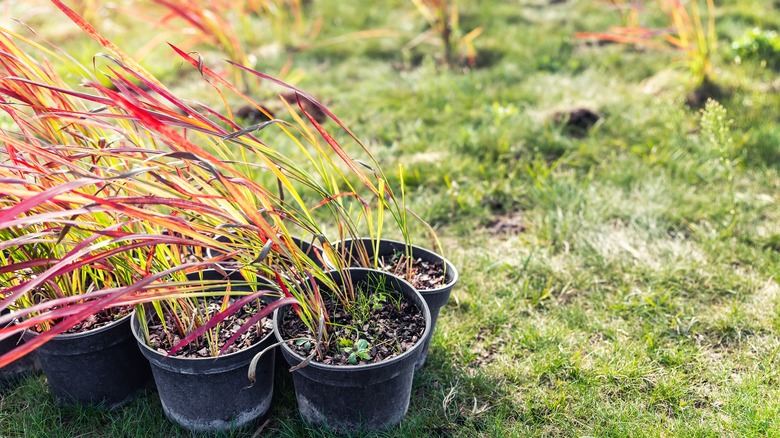If you’re a fan of purple fountain grass, Japanese blood grass will likely steal your heart, too. Both these plants fall under the category of ornamental grasses, well-known for their high visual impact. Japanese blood grass, also scientifically known as Imperata cylindrica ‘Rubra,’ hails from East Asia and adds a touch of the exotic to any garden setting. Imagine adding flames to your garden, but in the form of grass — that’s what this eye-catching variety resembles with its blade-like leaves that transition from green to a brilliant red as the seasons change. Now, you may wonder what sets Japanese blood grass apart from other ornamental varieties, like the popular purple fountain grass. Well, aside from its dramatic color shift, it has a unique texture and form that make it a versatile design element in your landscape. Whether you’re planning a minimalist garden or an eclectic mix of flora, Japanese blood grass fits right in. It grows in clumps and can reach heights of up to 18 inches, giving you flexibility in incorporating it into your outdoor space.
Beyond the immediate aesthetic appeal, which is compelling, this grass presents numerous advantages that simplify your life as a gardener. The benefits range from low maintenance requirements to disease resistance. With this multifaceted plant, you’re not just adding a splash of color to your garden—you’re incorporating a versatile, resilient, and undeniably striking species.
Low-maintenance needs: a true friend for busy gardeners

Let’s be honest, gardening can sometimes feel like a full-time job, especially when you’re dealing with plants that have endless requirements: frequent watering, specialized soil, the right amount of sunlight, and, let’s not forget, regular fertilizing. With Japanese blood grass, you can relax a bit. It’s a low-maintenance dream come true. It’s forgiving regarding soil quality, which means you don’t have to become a soil scientist to keep it happy. However, if you’re feeling generous and load it up with extra nutrients, you might find it growing too well, edging towards the invasive side. So, moderation is key here. Keep a watchful eye, especially if you live where invasive plants are a concern.
Now, if you despise the drab, colorless look some plants take on during the winter, you’re in for a treat. Japanese blood grass holds its own even when the weather turns chilly. In fact, its resilience during the colder months can be a real game-changer for your garden’s winter appeal. It retains some of its vibrant colors in many climates, acting like a natural ornament amid the snow and frost. Come spring, you have choices—no rigid rules here. You can cut the entire plant to make way for new growth or simply clean up any dead or brown foliage. Your garden, your rules. That’s the versatility and ease Japanese blood grass brings to your outdoor space.
Disease and pest resistance: a hassle-free addition to your garden
With many types of grass, you’re often on constant alert for various diseases like rust, fusarium, or the dreaded leaf spot. This isn’t a side gig you signed up for. Well, Japanese blood grass offers you a breather. You’re not stuck in a cycle of inspecting leaves, researching symptoms, and then deciding which fungicide to deploy. This grass is naturally resistant to the common disorders that plague other species. As for the local wildlife, such as deer and rabbits, they often view your garden as their salad bar. With Japanese blood grass, the usual culprits keep their distance. Think of it as a ‘no trespassing’ sign; it works around the clock to protect your garden from uninvited munching.
Now, erosion control is a topic that might not always be on your radar, but it should be if you have sloping ground. Japanese blood grass is a natural solution that saves you time and your landscape from the detrimental effects of erosion. Where other plants may struggle to establish themselves, this grass digs in quickly, fortifying the soil. Its quick growth acts like a living retaining wall, preventing soil from slipping away during heavy rains or wind. For further prevention of erosion, you can also plant it on sandy soil. So, if you’re battling with areas that other plants just can’t seem to hold down, Japanese blood grass might be the sturdy hero you’ve been looking for.
